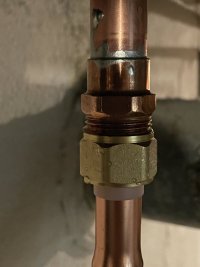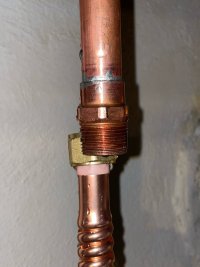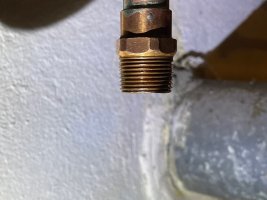SonOfGloin
New Member
I'm hoping to tap the collective wisdom of the seasoned vets here. I'm in the middle of a water heater replacement project and I opted to forgo sweating in rigid copper piping and using a union and instead set it up to accept flexible copper pipe for ease of future replacements.
I cannot, for the life of me, get this last nut to seal!
No matter what I do, it leaks through the threads. I avoided using teflon tape, as seems to be the common advice on this forum over the years. I put a small amount of silicone grease on the rubber washer for good measure. No different. Any level of tightness from hand tight to full muscle/two wrenches tight yields the same result. I followed up by trying the teflon tape - no difference. I even bought a different corrugated pipe, thinking something was off in the manufacturing process of the old one. Still the same result.
The male threads do not seem to be stripped or anything, either.
What's the trick with these damned things? This is my first time working with them. Thus far, I am not impressed. I've spent hours finding with this damned thing...
Any help is deeply, deeply appreciated.
I cannot, for the life of me, get this last nut to seal!
No matter what I do, it leaks through the threads. I avoided using teflon tape, as seems to be the common advice on this forum over the years. I put a small amount of silicone grease on the rubber washer for good measure. No different. Any level of tightness from hand tight to full muscle/two wrenches tight yields the same result. I followed up by trying the teflon tape - no difference. I even bought a different corrugated pipe, thinking something was off in the manufacturing process of the old one. Still the same result.
The male threads do not seem to be stripped or anything, either.
What's the trick with these damned things? This is my first time working with them. Thus far, I am not impressed. I've spent hours finding with this damned thing...
Any help is deeply, deeply appreciated.



